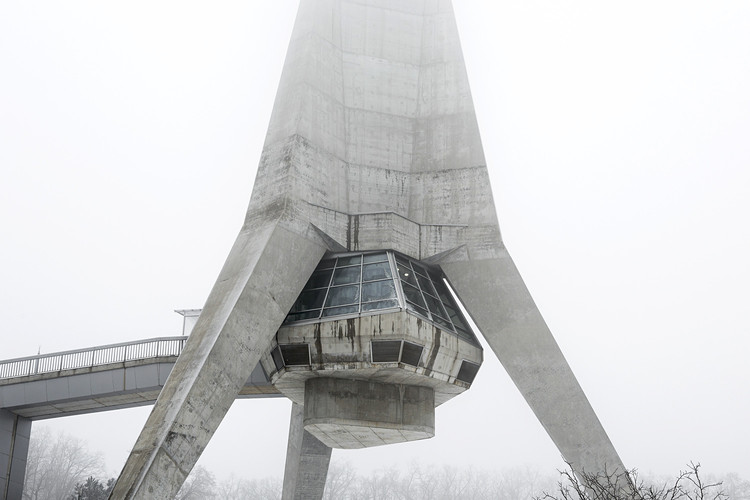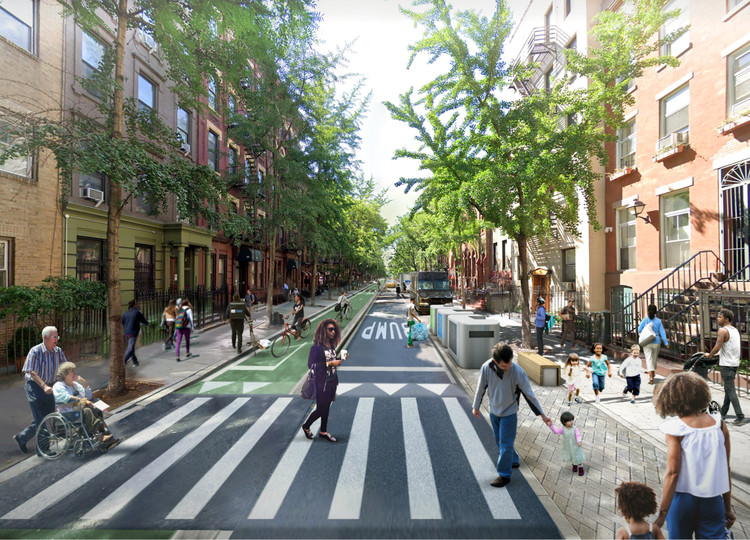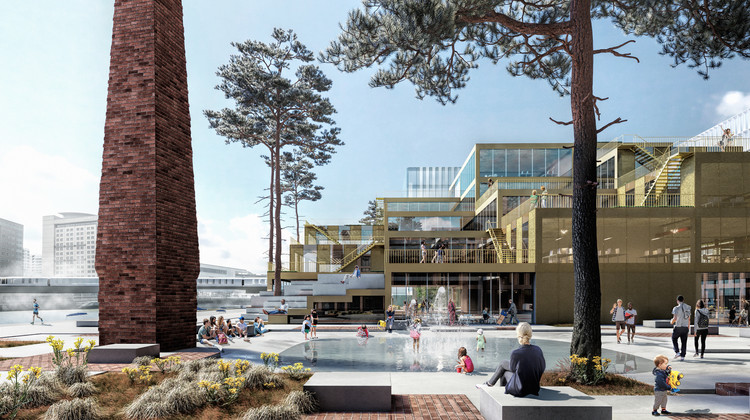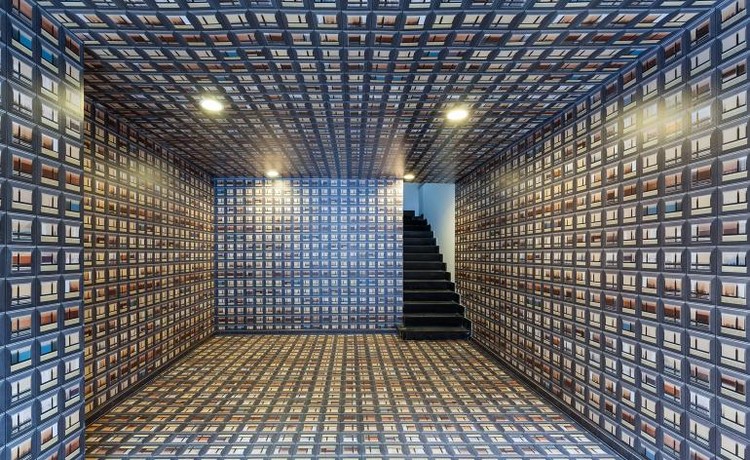
Learn how to make cinema-like video renderings with Lumion animation tools


Learn how to make cinema-like video renderings with Lumion animation tools

Recycled and reused materials continue to grow as a more attractive alternative in the construction field. They are at most times a coveted sustainable substitute to conventional building materials, offering a financially resourceful solution when appropriately sourced and implemented. Aside from saving up on raw material costs, establishing recycling facilities or factories might present a good opportunity to generate jobs within a local setting (collecting, handling). The recycling process might also be used as a gateway to lower energy consumption, with some plants eventually generating their own power through specific material transformation techniques (Heat generated power).

This article is part of "Eastern Bloc Architecture: 50 Buildings that Defined an Era", a collaborative series by The Calvert Journal and ArchDaily highlighting iconic architecture that had shaped the Eastern world. Every week both publications will be releasing a listing rounding up five Eastern Bloc projects of certain typology. Read on for your weekly dose: Eccentric Urban Buildings.

The spire of the Notre Dame cathedral, destroyed during the fires of 2019, will be restored according to the original 19th-century Gothic design, as reported by French President Emmanuel Macron. Built in 1860, to replace the original structure removed in 1792, the spire, not exactly a medieval structure, was designed by Eugène Viollet-le-Duc who found inspiration in the original architectural epoch of the Cathedral.

Van Alen and the New York City Council have announced the 6 finalists for the “Reimagining Brooklyn Bridge” international competition, in both the professionals and young adults categories. Inspiring participants to rethink the iconic Brooklyn Bridge walkway, the contest gathered short-term interventions and longer-term proposals for a complete reconfiguration of the bridge. The 3 final teams in the Professional category include BIG + ARUP; ScenesLab + Minzi Long + Andrew Nash; and Pilot Projects Design Collective, Cities4Forests, Wildlife Conservation Society, Grimshaw, and Silman.

As ride-sharing services grow and personal ownership of automobiles declines, office building owners and developers are re-thinking the value of parking structures, and their capacity and ability to convert. As part of the total transformation of One Post Office Square (OPOS), located in the heart of Boston's financial district and designed by Gensler, a new automated parking garage will optimize the use of valuable leasable space, enhance the user experience and create long term flexibility.

Cities around the world are facing new questions of urban flight. As the COVID-19 pandemic spread, it exacerbated a range of living conditions and housing crises, from telecommuting and construction to global economies. As Fast Company reports, almost 40% of those living in cities have considered moving out since the pandemic started. With the possibility of the pandemic stretching on for years, more urbanites are considering the move to rural areas and small towns.

The Manifesto of Futurism, written by Italian poet Filippo Tommaso Marinetti in 1909, was the rallying cry for the avant-garde movement driven by the writers, musicians, artists, and even architects (among them Antonio Sant'Elia) in the early 20th century. After the manifesto's publication, Futurism quickly came to the forefront of public conscience and opened the way for many other cutting edge movements in the art world and beyond.
While the movement would undergo a significant decline in the years following World War II, it reinvented itself decades later during the Space Age, when faith in technology and industry were at a fever-pitch and the world's powers were racing to put humans on the Moon. All of a sudden, humanity had a new cultural panorama that inspired every facet of society--from musicians, to scientists, to architects. With the combination of engineering and art, not to mention the bountiful scientific achievements of the time, works of architecture turned into works of science fiction.

Some researchers define the Anthropocene as beginning at the Industrial Revolution. Others identify it with the explosion of the first nuclear bomb, and others with the advent of agriculture. Regarding the precise timeline, there is not yet a scientific consensus. But the notion that human activities have been generating changes with planetary repercussions, whether in the temperature of the Earth, in biomes, or in ecosystems, is one that has become increasingly popular. The anthropocene would be a new geological era marked by the impact of human action on planet Earth. This acknowledgement of human impact is particularly disturbing if we consider that if the entire history of the Earth were condensed in 24 hours, humans would only appear in the last 20 seconds. Whether in the massive extraction of natural resources or in the carbon release from vehicles and industries, it is well known that a large part of the fault lies with construction activities, especially in the production of solid waste due to waste and demolition. In Brazil, for example, civil construction waste can represent between 50% and 70% of the mass of solid urban waste [1]. Many will end up being discarded irregularly or thrown in landfills to be buried indefinitely.

La Biennale di Venezia is presenting for the first time an exhibition curated by all the Directors of the six Artistic Sectors from Art, Architecture, Cinema, Dance, Music, Theater. It will also be live-streamed on July 15th, 2020, at 2:30 pm (Italian time).

PAU or Practice for Architecture and Urbanism revealed images for a proposal that imagines New York City without cars. The visionary N.Y.C. (“Not Your Car”) project unlocks the potential of the city’s streets, reopens the public space to people and bans private vehicles.

Danish architects Third Nature have designed a new proposal for a regenerative tourism site in Japan. Called Nordisk Hygge Circles - Ugakei, the project was completed with Japanese engineers Structured Environment and sustainability experts Henrik Innovation. The new adventure park consists of cabins and glamping tents, a camping area along the estuary, and a learning area to encourage activities in nature.

The following text was drafted in response to the first prompt in The Architect's Newspaper's “Post-Pandemic Potentials” series. A previous response, by Mario Carpo, argued that all the changes ushered in by the pandemic are likely to be reversed. Read more about the series here.
As the last of our mid-term reviews were completed in early March, the looming red dots of the COVID-19 tracker were still well east of New Haven—indeed, an ocean away. The design studios on the upper levels of Rudolph Hall were strewn with the typical detritus of the charrette, as our students departed for spring break and a well-earned two-week respite. Within a few days, however, Yale closed our campus out of an abundance of (what is now clearly justified) caution and we had abandoned the building altogether, told our students they would not return to those studios for the rest of term, and were scrambling to heave the entire curriculum into an online mode. Instead of resetting our spaces for the last push of the term, we turned to creating digital collaboration infrastructure, teaching everyone how to use Zoom, and chasing our students around the globe to verify their time zone, home equipment, and connectivity.

We've recently passed the halfway point of 2020, and to date, we've published hundreds of residential projects featuring distinct ways of living on ArchDaily. In a year marked by the worst health crisis that humanity has experienced in the last century, the Covid-19 pandemic, the house has gained new meanings and values, reiterating that no matter how diverse its program, a home's purpose is to shelter its inhabitants.

What happens when the sensor-imbued city acquires the ability to see – almost as if it had eyes? During the 2019 Shenzhen Biennale of Urbanism\Architecture (UABB), titled "Urban Interactions," Archdaily is working with the curators of the "Eyes of the City" section at the Biennial to stimulate a discussion on how new technologies – and Artificial Intelligence in particular – might impact architecture and urban life. Here you can find all the information about the “Eyes of the City” section, curated by Carlo Ratti, Politecnico di Torino, and SCUT - including exhibits, events, and project's blueprints.
For some years now, a key issue in European debate has catalysed the attention of economists, sociologists, technologists, policymakers and trade unionists: Industry 4.0. Established in Germany in 2012 and initially discussed in an almost exclusively technological key, the issue has overwhelmed the political agenda of the main European economies, stimulating industrial policies and state support, but also provoking heated debates on the future of work and on the new relationship between factory and society.

As the foundation of any architectural design, sketches and drawings have long been known for their ability to allow the architect to interact with his/her design efficiently and express concepts intuitively. While the importance of hand drawing is understood broadly in architectural schools, what happens to those who is incapable of hand drawing? Numerous students have found it extremely difficult to cope with the intensity of hand drawing exercise during their first year in architectural training. Among these students, some would choose to quit architecture simply because they cannot draw well, some would decide to focus more on learning the techniques of computer-generalized design drawings.

The Midnight Charette is an explicit podcast about design, architecture, and the everyday. Hosted by architectural designers David Lee and Marina Bourderonnet, it features a variety of creative professionals in unscripted conversations that allow for thoughtful takes and personal discussions. A wide array of subjects are covered with honesty and humor: some episodes provide useful tips for designers, while others are project reviews, interviews, or explorations of everyday life and design. The Midnight Charette is also available on iTunes, Spotify, and YouTube.
This week David and Marina are joined by Anne Fougeron, award-winning architect and founder of Fougeron Architecture, to discuss her work, city densities, creating good urban spaces with architecture, women, and equality in architecture, design processes, partnering with other offices and more! This episode is part of a series produced with the support of the SF Urban Program, Architecture Department, Cal Poly. Enjoy!
.jpg?1594399069)
Design practice MVRDV has unveiled a new plan to transform their seminal Dutch Pavilion from the 2000 World Expo in Hannover. The project will convert the former Expo Pavilion into a co-working office building, as well as two structures for student housing and parking. The team aims to reinterpret the original project’s concept for the two new buildings and celebrate the iconic structure.

According to Howard Gardner, human intelligence can be classified into 8 different categories. One of these is spatial intelligence, which describes the ability to mentally create and imagine three-dimensional spaces. Architecture is one of many disciplines that benefits from this ability and in this article we will explore just how visual representation in architecture has evolved throughout history--from displaying the most brilliant of ideas to capturing the wildest of dreams.

The Henning Larsen-designed Belfast Waterside development was officially granted planning approval by the Belfast City Council, after a year in the planning approval process. Located on the site of the former Sirocco Works, the project is set to “transform the 2.6-hectare area on the east bank of the River Lagan that has been disused for nearly two decades”.

New details have been released on the 5th Istanbul Design Biennial. Curated by Mariana Pestana with Sumitra Upham and Billie Muraben, the Biennial aims to open on October 15, 2020. A new structure will bring together different formats of display under the theme Empathy Revisited, and the designs will include interventions in a range of exhibition venues, outdoor spaces and digital platforms.

Louisiana Channel has recently published a second piece of their interview with Jens Thomas Arnfred and Søren Nielsen co-founders of the award-winning Danish practice Vandkunsten Architects. In this short video, the two architects talk about nurturing the sense of community through design and reflect on the studio's preoccupation with fostering social encounters within their projects.